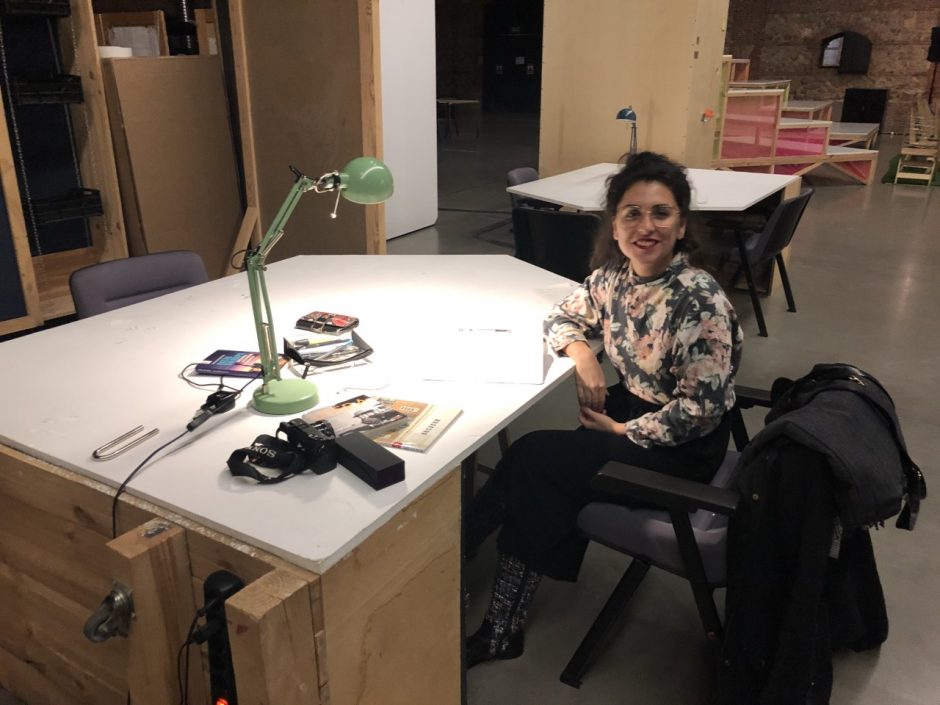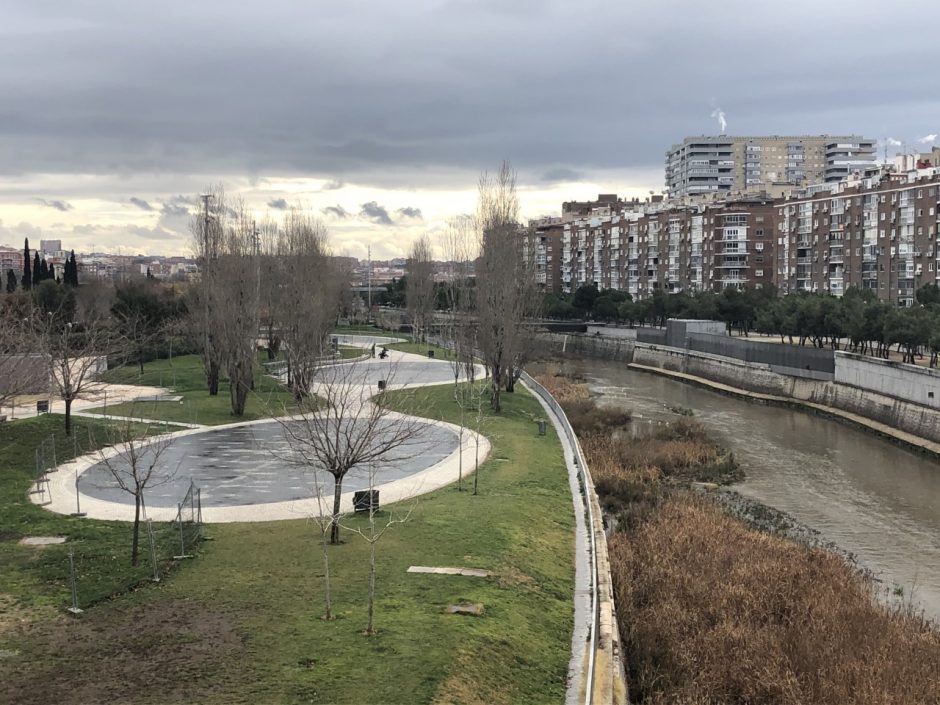Madrid: A city turning eco-fictions into eco-futures through systems innovation
25 Mar 2020
Three-quarters of European citizens—over 400 million people—live in urban areas, and these numbers are still on the rise. This makes Europe’s cities an ever more important crucible for low-carbon solutions. Here, we find out about an unusual cross-sectoral alliance in Madrid that is using creative arts in a city-wide decarbonisation and resilience project.
The Spanish capital is one of 15 cities taking part in an EIT Climate-KIC-led ‘Deep Demonstration’ of Healthy, Clean Cities—a project that is prototyping a breakthrough model of orchestrated systems innovation. In the project, city governments act as “challenge owners” to ensure support for an ambitious, cross-sectoral transformation agenda. The project also integrates designers to help map the opportunity space for systemic change and to design leverage points—which can include interventions through finance, education, citizen engagement, regulation, and the creative arts.
Reimagining Madrid
At her workspace in the hanger-like studio of the Matadero Cultural Centre in downtown Madrid, Andrea Azuqueca is scribbling ideas in her notebook. At her elbow is a book about “eco-social transition” entitled Rutas sin Mapas (Routes without Maps) and, beside it, an illustrated guide to the Madrileño district of Usera. A 26-year-old recent architecture graduate, Ms Azuqueca is deep in the initial investigation phase of a three-month artistic residency. Her focus: To work alongside the residents of Usera (colloquially known as Madrid’s Chinatown) to re-envision the neighbourhood as an exemplar of low-carbon living.
Madrid is in urgent need of such examples. Located in the heart of the Iberian Peninsula, the Spanish capital finds itself facing ever-hotter summers as well as an increase in freak weather events. The city’s climate challenges are exacerbated by a densely-packed built environment, coupled with increasingly congested traffic, limited green space, and a long-neglected watercourse (the River Manzanares).
Pointers towards a cleaner, greener future can be found in the Madrid 360 Environmental Sustainability strategy (on air pollution) and in its ‘Plan A’ strategy (on climate change). Couched in a detailed 199-page document, the latter sets out a vision for reducing the city’s overall carbon emissions by 40 per cent by 2030.
But what would such a city look like? And how might Madrileños get there? Ms Azuqueca hopes that these two questions will spark the imagination of Usera’s residents about what the future could look like. Drawing on her creative talent, her job is then to find ways to bring these eco-fictions to life in an artistic installation within the community itself.

“The goal of the installation is to help us all better visualise this future, which, along with the debates and discussion it will hopefully prompt, is the first step towards seeing such a future realised,” says Ms Azuqueca, who also acts as a spokesperson for the Extinction Rebellion campaign group.
Unusual bedfellows, in an unusual bed: Cross-sectoral collaboration is key
The “Eco-fictions” installation is the brainchild of Instituto Mutante de Narrativas Ambientales, an environment-focused arts group based at Matadero. They are taking part in the Madrid chapter of EIT Climate-KIC’s recently launched Deep Demonstration of Healthy Clean Cities project, along with three other core partners—Madrid’s Ayuntamiento (City Government), the transport infrastructure operator Ferrovial, and the Technical University of Madrid.
Zooming out, Amsterdam, Copenhagen, Edinburgh, Kraków, Križevci, Leuven, Malmö, Maribor, Milano, Niš, Orléans, Sarajevo, Skopje and Vienna are also part of the pilot phase of the Healthy Clean Cities ecosystem. Each city is different and each city is contributing novel ideas and approaches within the same core Deep Demonstrations framework. The cities will share experiences and ‘actionable intelligence’ to encourage replication, scaling, cross-pollination and speed. It’s early days for the pilot project (it kicked off formally late last year), but Madrid’s four core participants were not starting from scratch. Far from it, in fact. The cross-sector coalition had already embarked together on an ambitious and highly experimental approach to driving forward climate innovation, off the back of an enriching two-year process and partnership.
A systems approach to tackling climate change
From the outset, former hierarchical ways of working were binned. If the “platform” (as the partners initially called themselves) was going to fast-track climate action as hoped, everyone would have to be on the same level.
“We are all aware of the urgency of climate change and the need to respond to emerging issues as flexibly as possible, which is why we were looking to work together in a less transactional and less top-down fashion,” explains Juan Azcaratel, Deputy Director for Energy and Climate Change at Madrid City Government, the pilot project’s challenge owner.
Agreeing a common purpose and a common approach was also “super important”, notes Sara Romero, one of the 15-strong team at the Technical University’s Innovation and Technology for Human Development Centre (itdUPM).
Not only does a shared focus maximise efficiency and effectiveness, she explains, it also helps the project partners build a culture of mutual trust—a vital, yet rare commodity among organisations coming from different sectors and used to different operating cultures. Lastly, in terms of approach, the group agreed to adopt the same set of tools and methodologies, be these for diagnosing the issues at stake, identifying the principal levers of change (and points of inertia), designing strategic interventions, or factoring feedback into the project’s evolving design. Here, their gut reaction was to ditch the incremental, step-by-step approach that typifies so much current action on climate change. Instead, they took a route less travelled: Namely, working on multiple fronts at the same time and within the same ecosystem (i.e. their home city of Madrid). Their thinking: large-scale change requires a wholesale shift, not tinkering at the edges.
A “portfolio approach” to systems innovation
What the group had intuited, EIT Climate-KIC has already worked hard to systematise into a new model of innovation. Their “systems innovation” model uses a “portfolio approach”—i.e. they help to design, build and manage mission-led portfolios of connected and simultaneous interventions, with the aim of shifting whole systems more quickly. It is this model, and its tools, that provides the framework for the Healthy, Clean Cities project, and for EIT Climate-KIC’s seven other Deep Demonstration projects, covering landscapes as carbon sinks, food, maritime hubs, just transition, resilience, long-termism and circular economy.
“Joining the Deep Demonstration has helped us to bring greater rigour to our way of working and has placed the concept of systems-level innovation at the heart of what we’re trying to achieve,” says itdUPM’s Ms Romero.

EIT Climate-KIC’s CEO, Kirsten Dunlop, is thrilled to have this unusual coalition on board:
“Deep Demonstrations are intended as inspirational examples of what can be done when innovation is orchestrated, collaborative, and mission-led. Working backwards from the changes we want to see in the world is one way of approaching systemic change.”
Action-oriented experimentation: Learning by doing
It may seem obvious that more of us need to collaborate across boundaries if we want to forge new grooves and move past business-as-usual. But this more ‘horizontal’ model of innovation is not just a question of organisational governance: It also implies a radically different mode of working together and learning together.
So what have EIT Climate-KIC’s partners learnt so far about cross-sectoral co-operation? Firstly, flexibility and responsiveness are everything. Just because everyone starts on the same page, doesn’t mean that circumstances don’t change. Also, learning happens as the project evolves, and this should lead to tweaks and changes.
Cecilia López, a development strategist in the itdUPM team, admits that working with such uncertainty can prove taxing. This is unsurprising. As with most organisations, the project’s partners are all accustomed to operating in line with a predetermined strategy: Goals firmly set, responsibilities divvied out, resources duly assigned… and so the juggernaut starts chugging.
Such rigidity doesn’t lend itself to managing today’s climate emergency, she states. For that, decision-makers need the space to learn from experience and the freedom to change tack if required.
She continues: “Companies and government agencies aren’t set up to work in such ways, but this is precisely what systems innovation requires.”
Such an approach is not without its stress points. Trust in your partners helps offset this to an extent, Ms López argues. More important still is a large dose of humility. The complexity of the systems addressed by the Deep Demonstration projects defy simple solutions. Once people accept that, she states, navigating the terrain ahead becomes more manageable:
“It’s perfectly possible to be dead clear on where you need to get to, but not one-hundred percent certain on the best solutions for getting there. Embracing this reality helps deal with the stress that comes with not knowing.”
Programming in provocation: Critical friends
With constant learning and responsiveness such a key element of Deep Demonstrations, rigorous diagnostics and monitoring are fundamental to the model. To this end, the project’s coordinating team at Madrid’s Technical University meet every Friday to reflect on current progress and, with the assistance of a visionary director, tweak their approach as necessary. In a similar way, one of the three working groups into which the Deep Demonstration partners are split is christened the ‘Grupo de Contraste’, which the team at itdUPM translate (loosely) as “The Provocateurs”. Their task, as Ms Romero puts it, is to “probe and challenge” the decisions of the two other working groups, which focus on project implementation and evaluation, respectively.
Engaging citizens is critical to success
Last but not least is the centrality of citizens in the decision-making process. Madrid’s City Government already seeks to achieve this to an extent; a small percentage of the municipal budget, for instance, is decided by public vote. Yet, as Juan Azcarate admits, opportunities for citizens to get involved in designing and executing policies linked to the city—their city—remain limited.
The team is not short of ideas on how to correct this. Framing climate change in a way that is not only readily understood but attractive to residents is an obvious first step. Likewise, finding appropriate means to engage citizens—holding meetings on the community’s home turf (rather than in more formal environments), for instance, or via social media—is also imperative.
Citizens want to see clear outcomes from their involvement, Mr Azcarate from the City Government adds. In the normal way of working, it can easily take 18 months for a project to come to fruition after initial consultation. That’s too slow, he concedes: “To keep momentum, it’s vital to show results quickly and make this [decarbonisation] a reality.”
Today’s decisions, tomorrow’s future
Back at the cultural centre in Matadeiro, turning Madrid’s low-carbon ambitions into a reality is precisely what the artist-architect Andrea Azuqueca is seeking to achieve. Even before she has settled on the theme or location for her exhibition, she is busy arranging a public debate to coincide with the opening night. As for the Deep Demonstration partners, early-stage discussions about precisely what activities will be included in the pilot’s portfolio are reaching culmination. While the exact specifics await confirmation, there’s a consensus that the individual interventions should link directly to the City Government’s recently agreed climate plan.
“What keeps me motivated is that the idea that the fictitious stories that we tell each other today could become reality in the future,” says Ms Azuqueca, “But that all depends, of course, on the decisions we take today.”
Related Goal
Goal 3: Accelerate clean urban mobility



